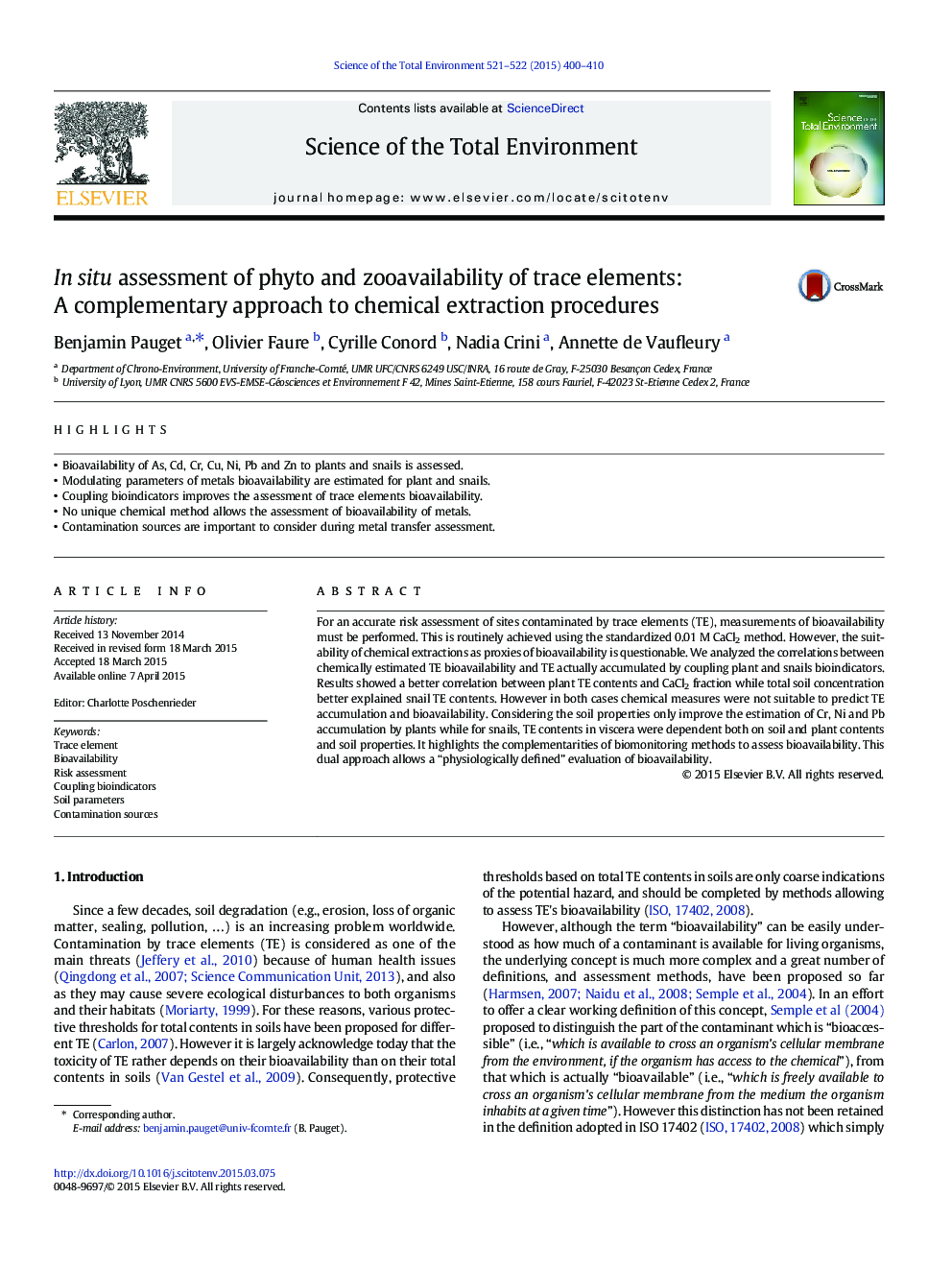| Article ID | Journal | Published Year | Pages | File Type |
|---|---|---|---|---|
| 6326629 | Science of The Total Environment | 2015 | 11 Pages |
Abstract
For an accurate risk assessment of sites contaminated by trace elements (TE), measurements of bioavailability must be performed. This is routinely achieved using the standardized 0.01Â M CaCl2 method. However, the suitability of chemical extractions as proxies of bioavailability is questionable. We analyzed the correlations between chemically estimated TE bioavailability and TE actually accumulated by coupling plant and snails bioindicators. Results showed a better correlation between plant TE contents and CaCl2 fraction while total soil concentration better explained snail TE contents. However in both cases chemical measures were not suitable to predict TE accumulation and bioavailability. Considering the soil properties only improve the estimation of Cr, Ni and Pb accumulation by plants while for snails, TE contents in viscera were dependent both on soil and plant contents and soil properties. It highlights the complementarities of biomonitoring methods to assess bioavailability. This dual approach allows a “physiologically defined” evaluation of bioavailability.
Related Topics
Life Sciences
Environmental Science
Environmental Chemistry
Authors
Benjamin Pauget, Olivier Faure, Cyrille Conord, Nadia Crini, Annette de Vaufleury,
